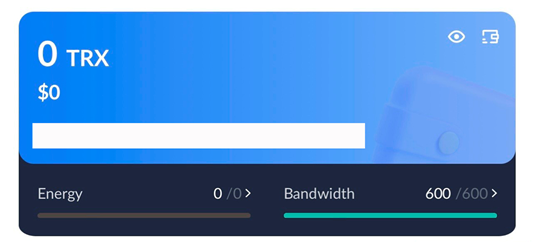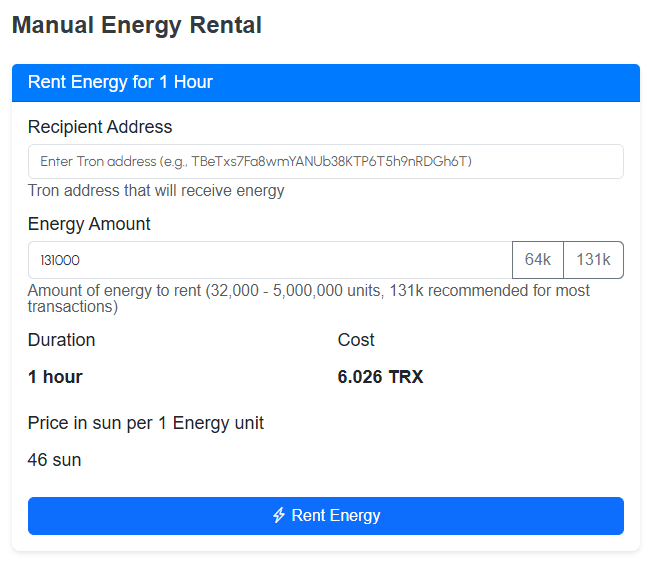How to Save on Tron Fees? 2 Proven Methods
An analysis of exchange wallets and exchangers shows that users burn millions of TRX on transactions absolutely pointlessly on a daily basis. This also applies to users of the Tron network, despite the fact that this blockchain provides participants with the opportunity to do without TRX when paying transaction fees.
While cryptocurrency blockchains Bitcoin and Ethereum charge fees directly in the native crypto of their network (BTC, ETH tokens), the Tron eco-platform makes it possible to use special resources instead of its native crypto in TRX tokens: Bandwidth and Energy.

The names of the resources make their purpose clear: the first one compensates the blockchain costs of ensuring network throughput during the transaction, the second one compensates the platform's computational and energy costs when the participant interacts with smart contracts: USDT and USDC tokens, DApps and other TRC-20 standard tokens.
It is important to know that Bandwidth is used not only when interacting with TRC-10 tokens (for example, when transferring TRX and other simple transactions). When interacting with TRC-20 tokens, it is also necessary to compensate the network for its efforts to ensure high throughput when conducting transactions.
So, Tron blockchain users may not spend TRX on transactions at all, but only use these resources. The main thing is to ensure that there is a sufficient amount of them in your wallet. If there is not enough resource reserve when conducting a transaction, the system will not even stop the transaction process, but will take TRX from your account without warning.
Conclusion: To save on fees in the Tron network, you should replace the means of payment for transactions – use Bandwidth and Energy resources instead of TRX.
Now we’ll tell you about the most effective ways to significantly reduce transaction costs, their features and advantages.
Method 1. Renting Energy
The platform provides such a resource as Bandwidth for free to each participant – now it is 600 units per day, which is enough for a couple of simple transactions. Therefore, the main concern of users and developers who interact with TRC-20 standard tokens remains a sufficient amount of Energy. Remember: if there is not enough Energy, the system will start burning TRX.
For active users who often transfer USDT stablecoins or regularly develop DApps, interact with smart contracts in any field, the capabilities of the Tron blockchain for obtaining free Energy may not be enough. You can get this resource in the Tron system for free only through staking, which we will discuss below.
An outlet for active users appeared with the emergence of resource rental markets in the system. Energy rental services are well aware of the blockchain features and the capabilities of its users. It is difficult for an ordinary participant to find users with high rates who can use excess Energy for a small fee. And rental services such as NETTS are engaged in the search for such opportunities.
For example, NETTS service’s team has deep knowledge of the Tron resource market, it is an infrastructure platform with its own bot and non-custodial cryptocurrency wallet, fully compatible with the Tron network. Includes robust API with different modes for user’s specific needs.

Renting Energy allows users to use it to reduce fees without having to freeze their own TRX. This is important if there are no available funds in the account to freeze, or the time limit does not allow obtaining Energy by staking.
Benefits of Using Energy Rental Service
Energy rental services allow you to transfer USDT and other TRC-20 tokens even if you don’t have TRX to pay for the transaction. But you probably have 3-6 TRX to rent Energy – it will be much cheaper than the transaction fee. Let’s consider this possibility using the NETTS service as an example.
To transfer USDT to a wallet that already has such stablecoins, you need to have 65,000 Energy units or 13.4 TRX. If the recipient's wallet does not have USDT, the transaction fee will require 131,000 Energy units or 27 TRX.
Renting Energy through NETTS will cost you 3-6 TRX (respectively) instead, and the transaction itself for transferring USDT in the Tron system is free! That is, you give only 20% of the amount that you would have to pay for a transaction in TRX the usual way.

So, let's highlight the most important advantages of a Tron network user when renting Energy:
- the ability to completely exclude TRX from transaction fees at the expense of rented Energy;
- significantly reduce overall costs (up to 80%) for interaction with TRC-20 tokens by paying only a small rental fee in TRX;
- flexibility in choosing the volume and term of Energy rental – the user himself determines for what period and how much Energy they need;
- there is no need to send large amounts of TRX for staking.
Among the disadvantages, it is possible to note the difficulty for the average user to find a reliable service for renting Energy. Well, and in any case, you will have to pay a commission to the service.
Method 2. TRX Staking
In the Tron network, you can use staking to reduce fees by using resources instead of the native currency: you essentially rent out your TRX, and Tron replenishes your wallet with the resource you designate – Bandwidth or Energy – in exchange for the opportunity to use them for a certain period of time.
This method of replenishing your wallet with the necessary resources has both undeniable advantages and annoying disadvantages.
Benefits of Staking to Earn Energy
The number of resources received in staking depends on the amount and duration of TRX freezing. When a sufficient amount of TRX is frozen, the user can:
- get Bandwidth and Energy at no extra cost;
- use Energy earned from staking to pay fees instead of TRX, which significantly reduces the cost of transactions or makes them free;
- participate in the governance of the Tron network and receive rewards in the form of TRX, Bandwidth, and Energy for frozen TRX delegated to super representatives.
Disadvantages of Staking to Earn Energy
To understand that the staking method will not provide its undeniable advantages to everyone, one fact is enough. In order to have enough Energy for two USDT transfers per day, you need to stake more than 20,000 TRX. Keep in mind that this value fluctuates, and most often – upwards. This is explained by many factors, including the total volume of native crypto in Tron staking.
It is clear that not every user can afford to keep such a volume of TRX frozen permanently. After all, staking does not allow you to withdraw even part of the TRX before the end of the freezing period.
So, both the advantages and disadvantages of staking to obtain Energy are obvious, including:
- the need to freeze significant amounts of TRX for active users and developers;
- risk associated with TRX exchange rate volatility;
- limited liquidity of frozen native crypto.
Comparison of Both Methods
Tron users who interact with TRC-20 tokens must check the remaining amount of Energy before each transaction and check the balance of resources after the transaction to prevent TRX from being burned during the transaction.
It is also very important to choose the method of replenishing resources. If you are using simple TRX transfers, you only need to have a Bandwidth resource on your account, which the network will replenish for you for free, or which you can additionally receive for short-term staking.
With the Energy resource, everything is more complicated – the system will not replenish it for you, you have to "mine" it yourself. And here you should realistically assess your capabilities and determine the methods that are most beneficial for you. It is quite possible that you are a holder of large volumes of TRX, and then you can choose staking, which in addition to additional Energy will also give you annual accruals in TRX.
But large holders are usually not DApps developers, for example, although they interact with smart contracts when transferring USDT. Therefore, active users and smart contract developers have to constantly choose: staking or renting.
The table below will help you make the right choice.
| Indicator | Energy Rental | TRX Staking |
|---|---|---|
| The need for TRX | Minor volume – only for payments of renting services | Significant volume |
| Transaction fee reduction | If the required volume of rented Energy is correctly determined – up to 80%, since only the rental service commission is paid, which is 20% of the transaction cost when renting for 1 hour | Up to 80% depending on the type of transaction |
| Flexibility | High – the user determines the volume of rented Energy, the time of receipt of Energy to the wallet and the rental period | Low – the user cannot change the staking conditions at his own discretion |
| Risks | Prices depend on the service | TRX price volatility |
To sum it up, we can conclude that the Tron network has opportunities for effective savings on transaction fees. The choice of these opportunities depends on the individual needs and capabilities of the user.

The most balanced and optimal option for active users who interact with smart contracts in the form of USDT, USDC, DApps, and other TRC-20 standard tokens is renting Energy. To do this, you do not need to have a large amount of TRX on your wallet to freeze. You also fully control the rental process, since you determine all the parameters yourself – and NETTS is one of the most transparent rental services out there.
To check for yourself, use the NETTS energy rental service right now and save on fees from now on.